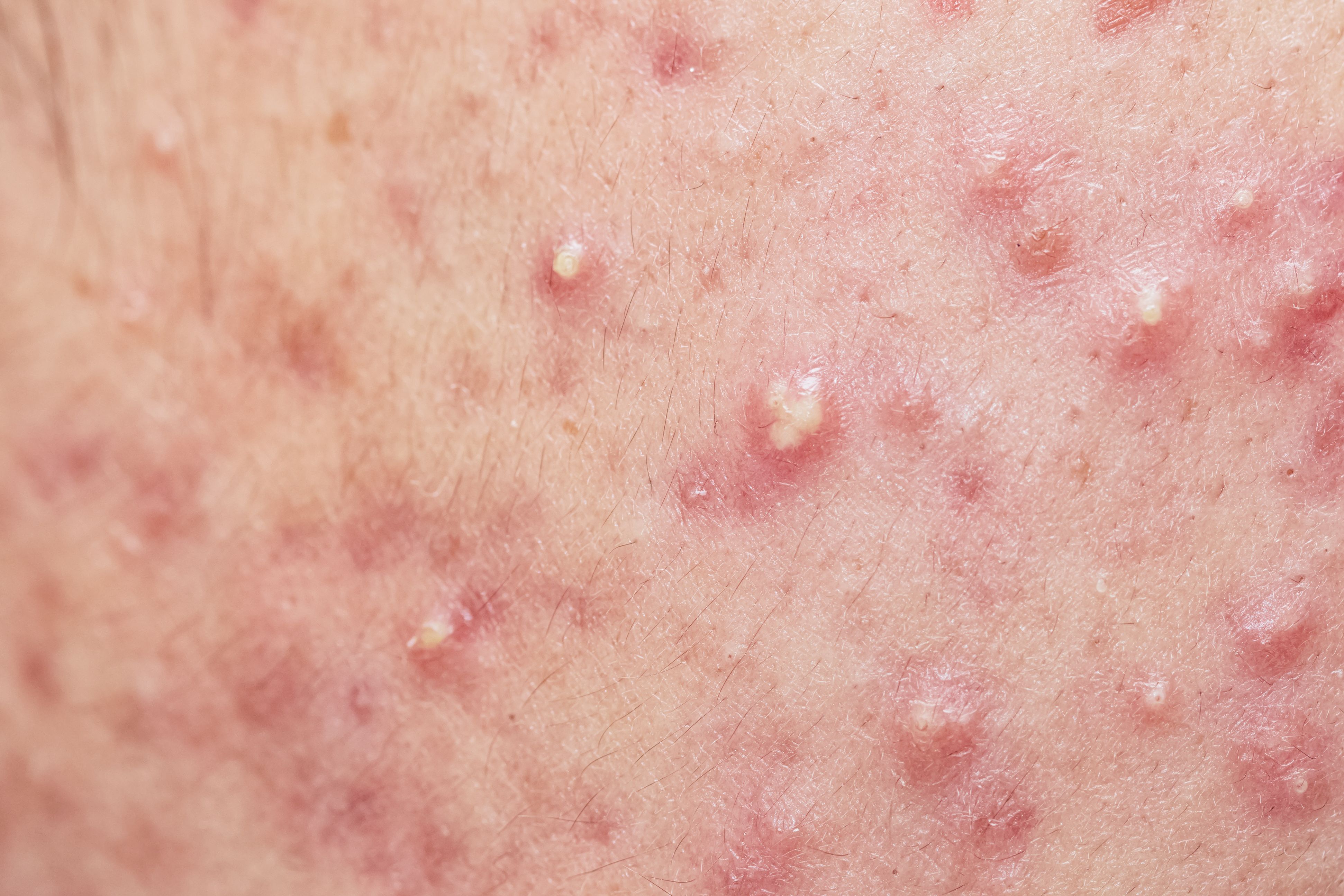- Case-Based Roundtable
- General Dermatology
- Eczema
- Chronic Hand Eczema
- Alopecia
- Aesthetics
- Vitiligo
- COVID-19
- Actinic Keratosis
- Precision Medicine and Biologics
- Rare Disease
- Wound Care
- Rosacea
- Psoriasis
- Psoriatic Arthritis
- Atopic Dermatitis
- Melasma
- NP and PA
- Skin Cancer
- Hidradenitis Suppurativa
- Drug Watch
- Pigmentary Disorders
- Acne
- Pediatric Dermatology
- Practice Management
- Prurigo Nodularis
- Buy-and-Bill
News
Article
Study Reveals 90% Acne Severity Reduction with TF-LDM
Author(s):
Key Takeaways
- Acne vulgaris is now recognized as primarily inflammatory, with inflammation preceding visible lesions and involving novel contributors like CAV1.
- Caveolin-1 (CAV1) plays a crucial role in inflammatory skin conditions, with therapies enhancing its expression showing reduced inflammatory markers in acne.
Research suggested acne is primarily inflammatory, occurring even in unaffected skin, redefining its pathophysiology.
Acne vulgaris remains the most prevalent chronic inflammatory skin disorder, affecting a significant portion of the population at various stages of life. The condition is traditionally attributed to the malfunction of pilosebaceous units (PSUs) and associated with factors such as hyperseborrhea, follicular hyperkeratinization, and the activity of Cutibacterium acnes.1 However, recent advances have reshaped our understanding of itspathophysiology, highlighting the early role of inflammation and novel contributors such as dermal adipocytes and caveolin-1 (CAV1).
Researchers behind a recent study noted traditional views on acne have emphasized the influence of androgens on sebum production, aberrant keratinocyte proliferation in the follicle, and bacterial colonization by C. acnes. Inflammation was previously considered secondary to these processes. However, evidence now suggests that inflammation precedes visible lesions and occurs in both affected and adjacent unaffected skin, positioning acne as a primarily inflammatory disorder.1
The protein caveolin-1 (CAV1), vital for caveolae stabilization and cellular signaling, has emerged as a key player in inflammatory and hyperproliferative skin conditions, including acne. Reduced CAV1 expression has been implicated in disorders such as psoriasis and atopic dermatitis, whereas its upregulation correlates with chronic wound healing. In acne, therapies that enhance CAV1 expression, such as the application of 30% supramolecular salicylic acid, have demonstrated reduced inflammatory markers and improved skin condition.2
Triple-Frequency Local Dynamic Micro-Massage (TF-LDM)
Ultrasound therapy has gained attention as a non-invasive treatment modality for inflammatory skin disorders. Recent studies explored the efficacy of triple-frequency local dynamic micro-massage (TF-LDM) waves in treating mild to severe acne vulgaris. TF-LDM utilizes ultrasound waves at multiple frequencies (e.g., 1/3/10 MHz and 3/10/19 MHz), creating "biological interference" that affects cells across various skin depths, stimulating repair and reducing inflammation.3
Study Overview
A retrospective study assessed 24 patients aged 19–52 years with mildtosevere acne treated with TF-LDM. Participants were divided into 2 groups based on the frequencies applied. Patients received up to 12 treatments over 6 weeks, with no concurrent pharmacological interventions. Acne severity was evaluated using a modified Global Evaluation Acne (mGEA) scale at baseline (T1), after treatment (T2), and follow-up (T3).4
Results
Researchers found patients exhibited a “statistically significant” improvement in acne severity, with mGEA scores reducing by an average of 73.7% at T2 and further improving to 90.1% during follow-up. These outcomes suggest sustained and even progressive benefits post-treatment. Furthermore, they found that both frequency protocols (1/3/10 MHz and 3/10/19 MHz) were equally effective, with no significant differences in efficacy between groups.
The study stated the therapy was well-tolerated, pain-free, and associated with high patient satisfaction. Minor adverse events, such as transient erythema, were reported but resolved within an hour. Importantly, no severe adverse effects were reported.
Clinical Implications
The study found TF-LDM demonstrated robust efficacy in managing inflammatory acne, with advantages including non-invasiveness, patient comfort, and long-lasting results. These findings underscore the role of mechanical stimulation in modulating CAV1 expression, thereby enhancing skin repair processes. Researchers suggested this approach offers a promising adjunct or alternative to pharmacological therapies, especially for patients seeking non-drug options or those with contraindications to systemic treatments.
Conclusion
The study found that TF-LDM technology allowed for “statistically significant” skin improvement in patients with mild to severe acne. Researchers stated the treatment outcomes were long-lasting, and were sourced from a pain-free, well-tolerated method. They suggested further studies should refine its application and elucidate the broader implications for inflammatory and hyperproliferative skin conditions.
References
- Kruglikov IL, Scherer PE. Caveolin-1 as a possible target in the treatment for acne. Exp Dermatol. 2020;29(2):177-183. doi:10.1111/exd.14063
- Shao X, Chen Y, Zhang L, et al. Effect of 30% supramolecular salicylic acid peel on skin microbiota and inflammation in patients with moderate to severe acne vulgaris. Dermatol Ther (Heidelb). 2023;13(1):155-168. doi:10.1007/s13555-022-00844-5
- Kruglikov I. Sehr hochfrequenter ultraschall : Neues therapieverfahren in der asthetik und dermatologie [Very high frequency ultrasound: New therapeutic method in aesthetic medicine and dermatology]. Hautarzt. 2015;66(11):829-833. doi:10.1007/s00105-015-3676-z
- Chervinskaya I, Gaidash N, and Kruglikov I. A retrospective pragmatic two-center clinical study to evaluate the clinical outcome of triple-frequency ultrasound in the treatment of mild to severe acne vulgaris. J Cosmet Dermatol. 2024. doi: 10.1111/jocd.16672






